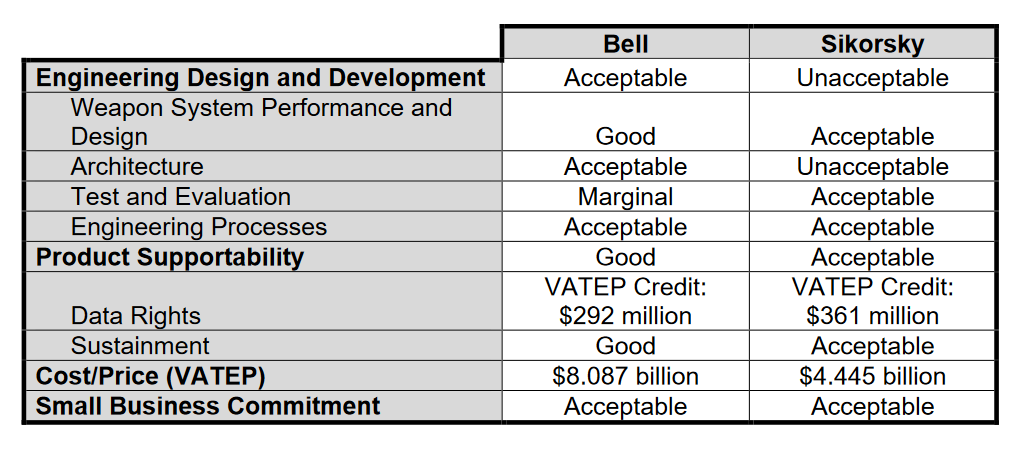
CORRECTION 4/14/2023 at 12:26pm ET: The original story misstated a total projected cost as a per unit cost for each bid. The story has been corrected.
WASHINGTON — Sikorsky and Boeing estimated that their Future Long-Range Assault Aircraft (FLRAA) would eventually cost $3.6 billion less than Bell Textron’s winning bid, but the Army found the team’s bid “unacceptable” in some key areas, the Government Accountability Office revealed in a new report.
On Thursday the government watchdog released a 38-page public report about why it opted to uphold the service’s decision to proceed with Bell’s V-280 Valor tiltrotor as its pick to eventually replace thousands of UH-60 Black Hawk helicopters, a deal that could soar to $70 billion if the program moves into production. The report sheds new light on what factors weighed in Bell’s favor.
In it, GAO noted four overarching evaluation factors that led to the Army’s decision, including where Bell envisioned their bid costing $8 billion while Sikorsky-Boeing said their Defiant X would eventually cost $4.4 billion. However, those potential cost savings were not enough to make up for what the government said were other deficiencies with the Sikorsky-Boeing bid.
When explaining its decision to the GAO, the Army used an analogy of blueprints to build a house.
“Sikorsky’s proposal provided something similar to a drawing of what the house looked like on the outside, a basic indication of the size and shape of the house,” the GAO report said. “Such a picture did not provide the functional detail that the Army required showing what the space would look like on the inside (i.e., how the system functions would be allocated to different areas of the system — for example, that food storage and preparation would be allocated to a space for the kitchen).”
The report goes on to detail core evaluation factors and the associated subfactors for each team, with the Sikorsky-Boeing being hit with an “unacceptable” mark for its engineering design and development.

“The (request for proposal) RFP stated that the engineering design and development factor and the product supportability factor were of equal importance and individually more important than the cost/price factor, and that the cost/price factor was more important than the small business commitment factor,” the GAO wrote.
“Overall, the RFP provided that all non-cost/price factors, when combined, were significantly more important than cost/price and that, to be considered for award, a rating of no less than “acceptable” had to be received for each of the non-cost/price factors,” it added.
Ultimately, the Army decided that Bell’s proposed approach to weapon system performance and design, architecture, and product supportability was “more advantageous” than Sikorsky-Boeing’s engineering design and development that was deemed “unacceptable.”
In response to the report, a Sikorsky spokesperson said the team will take time to review the document and “determine our next steps.”
“We remain confident the Lockheed Martin Sikorsky and Boeing team submitted the most capable, affordable and lowest-risk Future Long-Range Assault Aircraft solution,” the spokesperson added.

